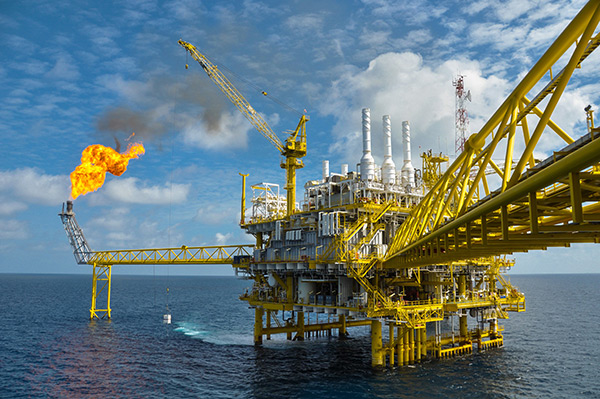As the stakes of climate change intensify, we need technologies that can help industries limit GHG today and achieve carbon neutrality.

By Adrian Fielding, General Manager, Emissions Control and Reduction, Honeywell Process Solutions (HPS)
According to the US Environmental Protection Agency, methane is 25 times as effective as carbon dioxide at trapping heat in the atmosphere.1 And over the last two centuries, concentrations have more than doubled. It’s estimated to be responsible for a quarter of the warming we see in the world today – And the costs to industry are significant.
In addition, governments around the world looking to drive toward net zero are toughening regulations on emissions generally – and leaks in the oil and gas industry specifically.
In the US, methane emissions are central to the Environmental Protection Agency plan released last year to require operators to detect and repair leaks. The aim: To slash methane from oil and gas operations by almost three quarters from 2005 levels by 2035.2 In the EU, meanwhile, the European Commission is also proposing to crack down –introducing penalties for leaks and potentially banning routine flaring and venting.3 The latter’s impact could be even more dramatic since while fugitive emissions account for about seven per cent of methane escaping, venting accounts for 37%.
More widely, The Global Methane Pledge launched by the EU and US a year ago now has over 100 countries signed up, committing to reduce global methane emissions by at least 30 per cent from 2020 levels by 2030.
“To limit warming to 1.5 degrees C and avoid near-term tipping points, the world must rapidly reduce methane emissions in addition to decarbonising the global energy sector,” the governments said in a joint statement announcing the pledge. Beyond governments, investors and the public are also increasingly pressuring companies to take the issue in hand.
Unfortunately, most emissions monitoring is not up to the task. Traditional approaches will increasingly struggle to meet government requirements or business needs as operators pursue their own carbon-reduction strategies.
Existing leak detection and repair (LDAR) programs are usually manual, labour-intensive, costly and time-consuming. The process is also inefficient and potentially prone to errors.
While there is increasing pressure to detect and address leaks quicker, the only option for many would be to significantly increase headcounts for more regular rounds – in an environment where both labour shortages and competitive pressures argue for the opposite. In most cases, it isn’t feasible. Instead, operators choose to bear the emissions costs and opportunities lost.
Honeywell has developed a real-time methane monitoring solution based on cost-effective wireless sensors. Low-energy sensors that cover more plant areas than traditional detectors provide a far more efficient and powerful solution. It offers a wide range of benefits.
First, it enables operators to quickly detect leaks and identify their source, eliminating the costly and time-consuming manual labour. Operators can use the information to prioritise repairs, address the worst leaks first, and avoid downtime. In upstream and midstream operations, automated quantification of emissions and user-configurable alarms can immediately alert operators to critical product losses at remote and unmanned locations. Downstream, in refineries and chemical plants, automated emissions monitoring can rapidly locate and quantifies the source of leaks to improve maintenance efficiency.
Crucially, it also captures and digitises the data to enable not only accurate and easy reporting and audits but analysis to identify trends and optimise operations. That can help identify design issues and other problems leading to leaks and ultimately shift the LDAR from a reactive to a proactive stance. In future, the data could help drive predictive maintenance regimes.
Nor is it just leaks; closer monitoring and analysis could identify the operational issues resulting in higher levels of flaring and venting – the much greater contributor to methane emissions. Many sites today simply have no way of measuring their venting emissions.
And this is perhaps the most important point: With an enterprise-level, near-real time view across all sources, the solution provides real visibility and transparency for emissions data. That’s important for regulatory reporting and public accountability. But it’s also a crucial driver for businesses’ own emission reduction strategies. It finally enables them to determine a baseline and benchmark for emissions data against which to set targets, measure their progress, and provide evidence of success.
Many operators’ road to emissions reduction will be long and potentially challenging. However, when one identifies a starting point, it’s much easier to know how and when to tackle the road ahead.

Adrian is the GM for Emissions Control and Reduction at HPS and is responsible for driving the overall strategy and development of this initiative. Adrian has been with Honeywell for over 15 years and before his current role, Adrian was responsible for the overall strategy of the safety and security business related to the digital transformation within HPS.
1 https://www.epa.gov/gmi/importance-
2 https://www.reuters.com/business/environment/us-unveils-crackdown-methane-starting-with-oil-gas-rules-2021-11-02/
3 https://www.euractiv.com/section/energy/news/leak-draft-eu-law-cracks-down-on-methane-leaks-from-fossil-fuels/
In this episode, I sat down with Beejan Giga, Director | Partner and Caleb Emerson, Senior Results Manager at Carpedia International. We discussed the insights behind their recent Industry Today article, “Thinking Three Moves Ahead” and together we explored how manufacturers can plan more strategically, align with their suppliers, and build the operational discipline needed to support intentional, sustainable growth. It was a conversation packed with practical perspectives on navigating a fast-changing industry landscape.